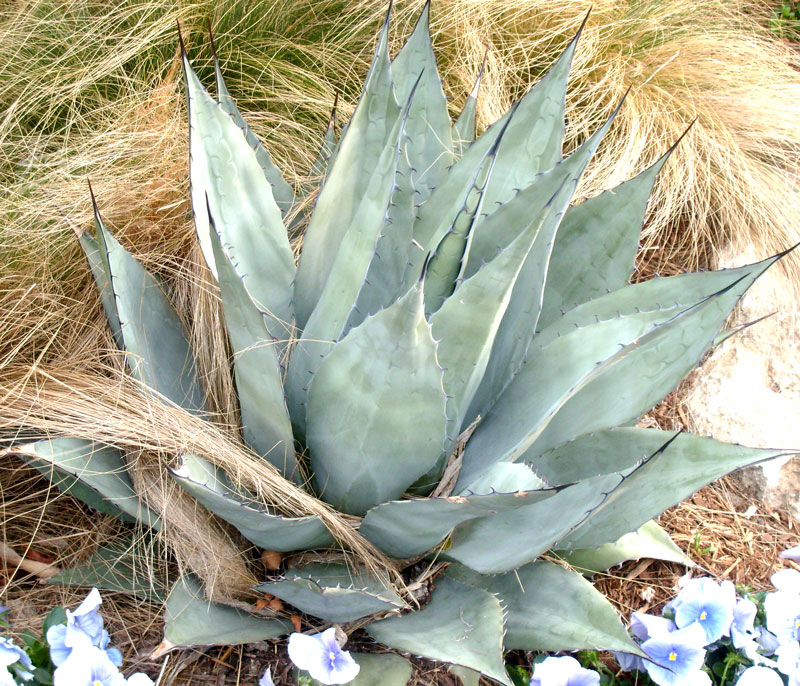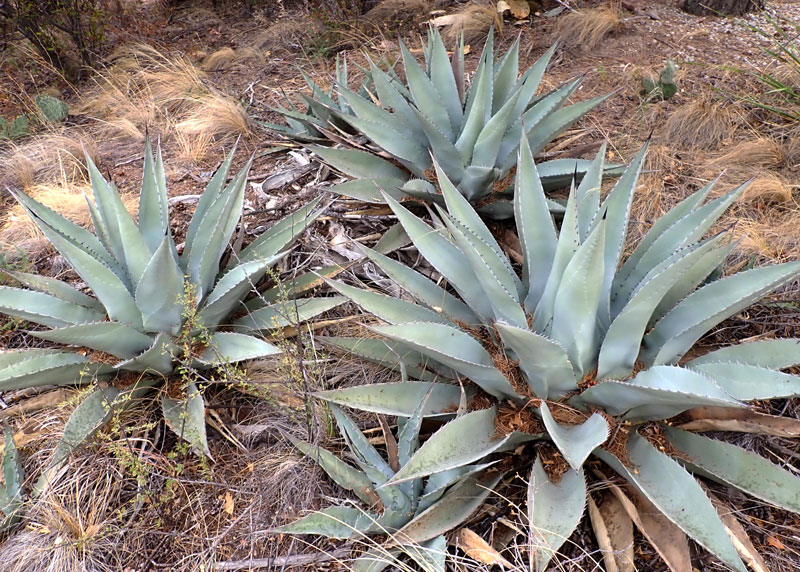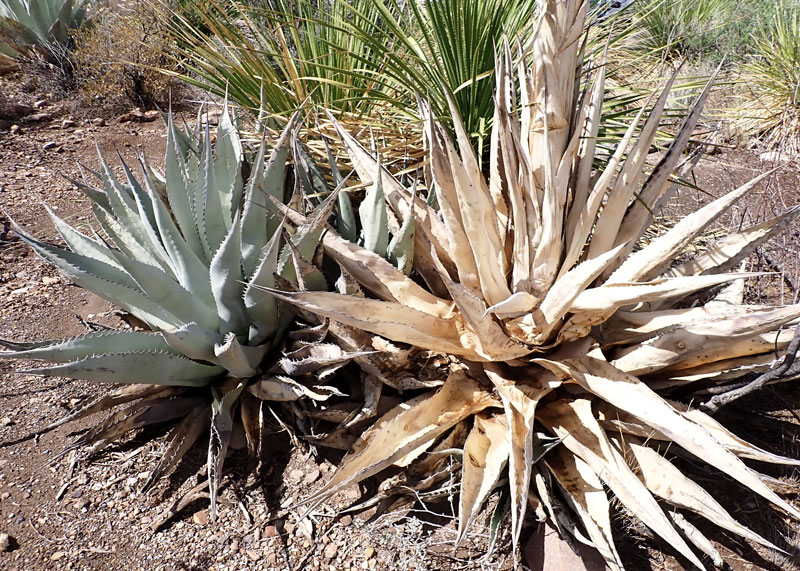Havard Agave – toughness in beauty

Agaves come in many sizes and patterns. They’re evergreen succulent plants that, depending on the species, will survive USDA Hardiness Zones 7-10, perhaps colder.
Agaves consist of clusters of thick, fleshy leaves that form spiral shapes called rosettes. Rosettes function as miniature rainwater harvesting systems. When it rains, the rosettes channel water down the leaves and to the root zone so that no precious water is lost. On many agaves, underground roots send up new little plants called offsets or pups. These pups can be severed and planted elsewhere.

Plant agaves in well-drained soil in full sun or where they will get afternoon shade. Plant them slightly high in their planting holes so that water runs away from the crowns of the plants.
Where winters are cold and freezing temperatures are common, plant agaves in the spring. Where winters are mild and summers are hot and dry, plant agaves in the fall so that the root system will establish before the next summer’s heat.
Small stones make an ideal mulch around agaves. Organic mulches can hold too much moisture for many species, and the mulch can sometimes work its way into the crown of the plant where it encourages rot.
Agaves are very sculptural plants and are best used as accents in the landscape, either in beds or containers. Excellent companion plants for agaves include autumn sage (Salvia greggii), zexmenia (Wedelia hispida), and ‘New Gold’ lantana.
What you’ll want to know about Havard’s agave…
• Botanical name: Agave havardiana, in honor of Valery Havard, a French immigrant to the United States and army officer, physician and botanist.
• Common name: Havard agave
• Plant family: Asparagaceae (formerly Agavaceae)
• Native range: Havard identified this species in the Guadalupe Mountains in 1881 and in the Chisos Mountains (Big Bend National Park now) in 1883. It is also found in the Davis Mountains and in northern Mexico. It is found at 4,000-6,000 ft.
• Winter hardiness: USDA Zone 7, possibly colder with protection.
• Mature size of plant’s leaf spread: 3 ft. tall, 4 ft. wide.
• Leaf color: silver-gray to blue with dark brown marginal teeth with sharp terminal spines.
• Flowers: greenish yellow, borne atop 12-ft. tall, very woody stems. Plants typically do not bloom until they are 20-40 years old.

• Mother plant dies after it finishes blooming. Offsets (“pups”) sprout up from the roots. They can easily be dug with a sharpshooter spade and replanted elsewhere in the landscape.
